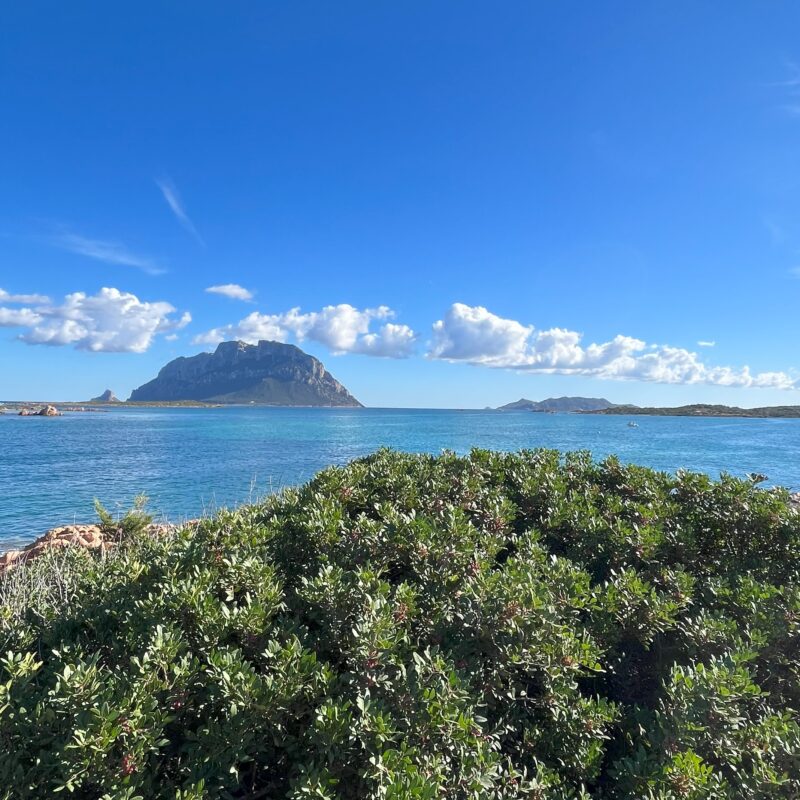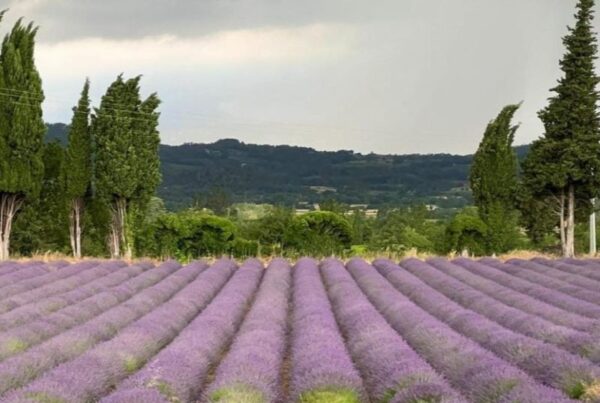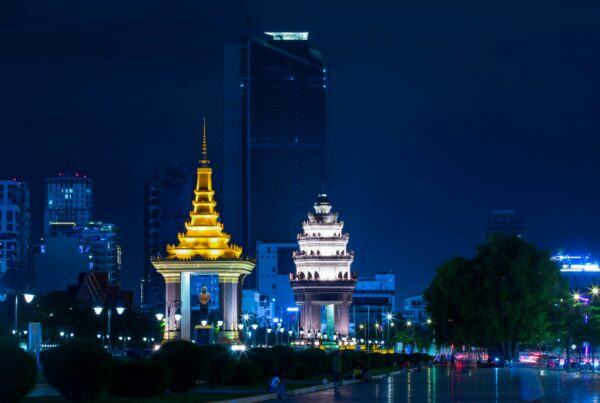We absolutely love the island of Sardinia Italy. It has a distinctive culture and cuisine that feels related to Italy but is definitely Sardinian. Whether you’re after pristine beaches for relaxing days in the sun, exploring charming towns or historic sites, or want to delve into the food culture, Sardinia has it all.
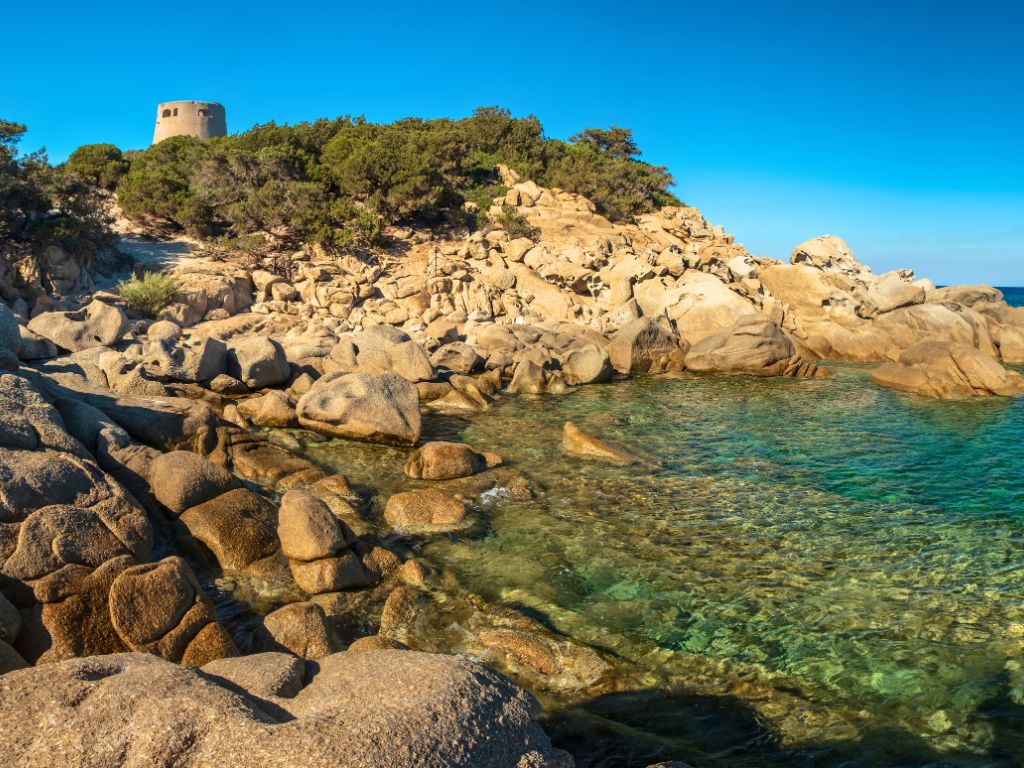
It’s no wonder that this is a very popular tour of ours, but if you’d like to know more, here we’ll give you all the details you need to plan your trip:
Why Sardinia Italy?
So why Sardinia? As the second largest island in the Mediterranean Sea, west of mainland Italy, there is a lot of ground to cover and the close links to mainland Europe and North Africa have long shaped the island’s history.
The History of Sardinia
Sardinia was inhabited since at least the Stone Age, and was the home of the Nuragic people, an advanced civilization in the Bronze Age that established towns, built temples and created artworks as well as trading with other ancient peoples. The many Nuragic sites across the entire island are a must-see, giving us a glimpse into the island’s ancient history.
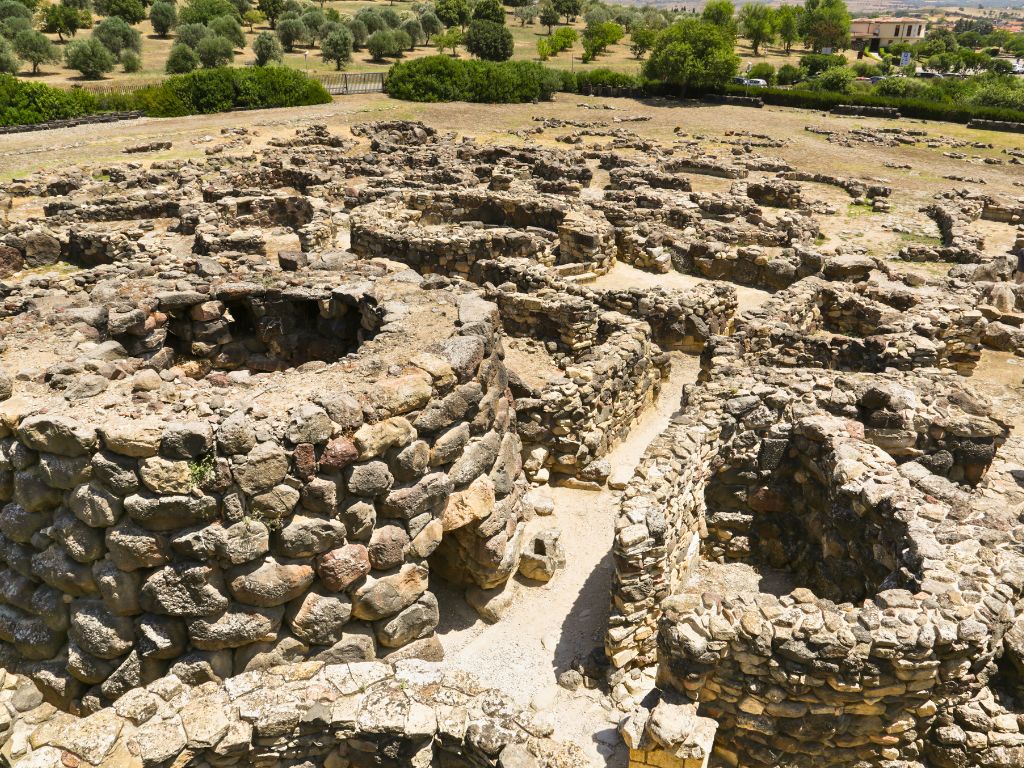
Over the centuries Sardinia’s attractive landscape and resources were a target for the ancient Romans and more, with foreign influences like Spanish rule giving the island and its people a unique local culture and language. Interested in finding out more about the history of Sardinia? Check out our dedicated blog here.
Sardinia’s Landscapes
As well as a fascinating history, Sardinia is also known for its white-sand beaches, turquoise waters, and rugged coastline. From the Costa Smeralda (Emerald coast) in northeastern Sardinia to the isolated beaches near Iglesias in the southwest, there is no end of stunning coves and clear waters to enjoy.
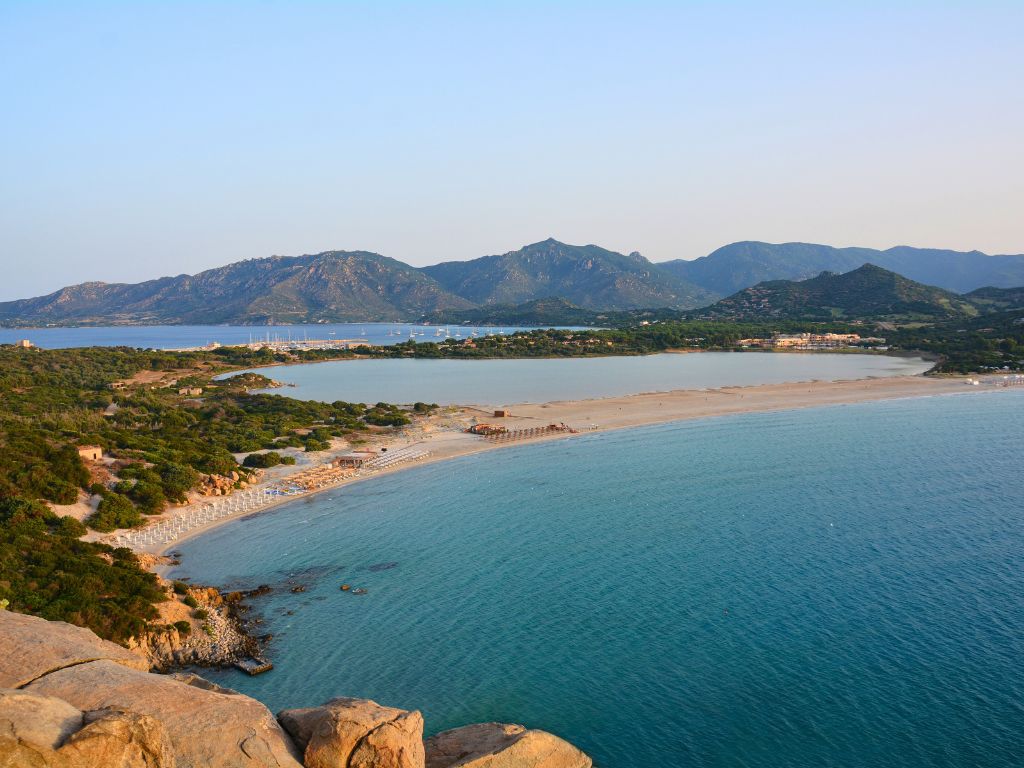
The contrast with the mountainous interior is fascinating. Remnants of ancient volcanoes (now extinct) stretch up into the sky, blessing Sardinia with nutrient-rich soil. The island’s remarkable climate and volcanic origins mean that all produce from Sardinia is unbelievably tasty – try some of the local wine and olive oil to see what we mean.
Practical Information for Travel to Sardinia
If we’ve sparked your interest, here are some of the essential, practical pieces of information you need to travel to Sardinia:
Money
Sardinia uses the Euro. Visa and Mastercard cards are widely accepted but American Express and other types of credit cards, not so much. You won’t need to carry lots of cash but we recommend having some with you (in smaller bills like 10’s and 20’s) as some places are still cash-only. If you need more cash when in Sardinia, use official bank ATM’s to withdraw money to avoid excessive charges.
Language
As part of Italy, Italian is the official language of Sardinia. However many local people speak Sardinian, which is related to but different from Italian. Familiarize yourself with basic greetings and phrases in Italian before traveling and be prepared to use online translators when you’re there. Do not assume everyone speaks English, especially outside the major cities.
Visa and Entry Requirements
As part of the Schengen Zone, many travelers can come to Sardinia without a visa for tourist stays up to 90 days. Your passport must be valid for at least 3 months from the date you plan to leave the Schengen Zone, have been issued within the last 10 years and have at least 2 blank pages.
For more specific visa information, refer to the Italian government website here.
What to do in Sardinia
There are so many options for what to do when you visit Sardinia. Besides exploring the many lovely towns and cities you’ll find across the whole island, here are some of our top suggestions for what to do:
Historical Sites and Museums
There are many Nuragic sites across this Italian region, but these are our favorites:
- Nuraghe Su Nuraxi near the small town of Barumini in south Sardinia, which is a UNESCO World Heritage Site. The narrow streets and ruined towers are quite incredible to see up close, and are well worth the effort to get here.
- Nuraghe di Santa Cristina, found north of Oristano. The Bronze Age temple here is one of the best preserved anywhere on Sardinia, and there is also a very early Christian church and small village.
- Around the modern town of Arzachena, north of Olbia, there are a number of Nuragic sites which while separate, are easily visited together. See the necropolis of Li Muri, tombs at Coddu Ecchju and Li Lolghi before the Nuraghe di Albucciu.
Moving forward in history, you can also visit the archaeological sites of Tharros and Nora, both originally founded by the Phoenicians and then taken over by the ancient Romans.
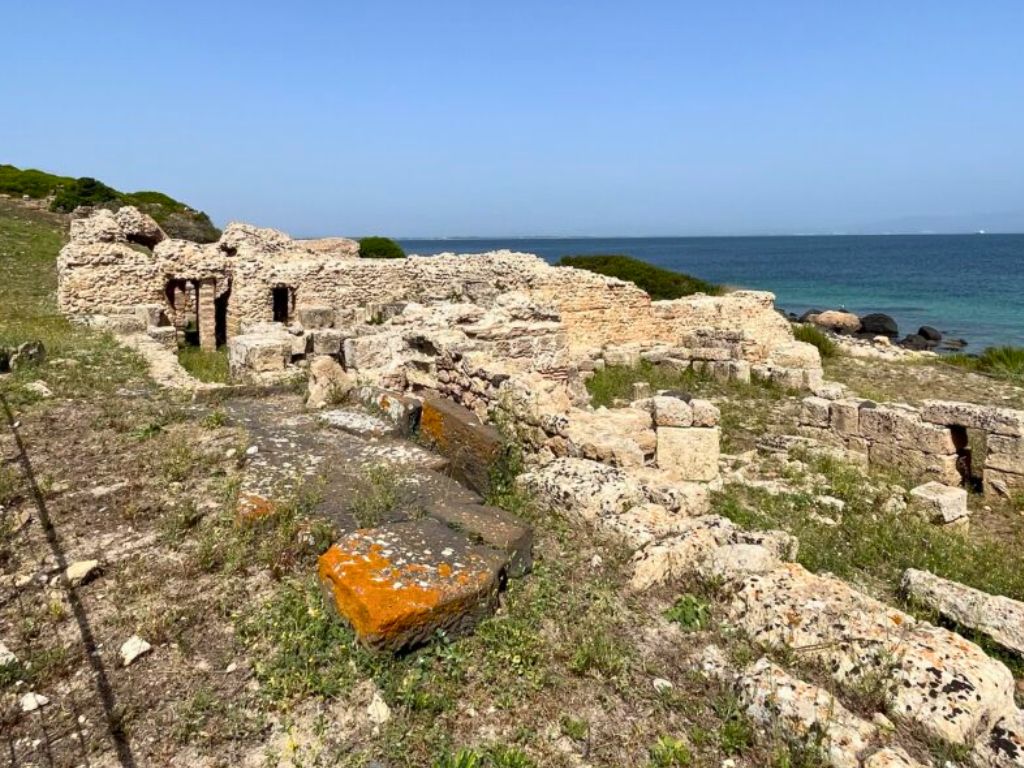
If you prefer your history indoors then the National Archaeological Museum in Cagliari is the place to go, telling the story of Sardinia from its prehistoric beginnings. The archeology museum in Olbia also has a great collection, with many ancient Roman artefacts found when the port area was excavated – they have multiple ancient ships on display which are fascinating to see.
Hiking and Outdoor Activities
For a sense of authentic Sardinia, head to one of the national parks for spectacular scenery. Hiking and mountain biking is very popular in the Parco Nazionale del Golfo di Orosei e del Gennargentu, where you can also kayak and dive on the eastern coast. The Parco della Giara is home to native, wild horses which you can see as you walk through the forest.
The northwestern coast, facing the French island of Corsica, is the place for windsurfing and kite surfing thanks to strong winds. Further down the western coast, head to the Sinis Peninsula if surfing is your thing which sees decent waves, or go sailing among the La Maddalena archipelago.
Beaches
You can’t really go wrong when it comes to Sardinia’s beaches, but there are a few things to keep in mind when deciding which one to go to.
Firstly, access is sometimes challenging, with high cliffs, limited transport options or a long walk to reach the sand. Make sure to check this before setting off!
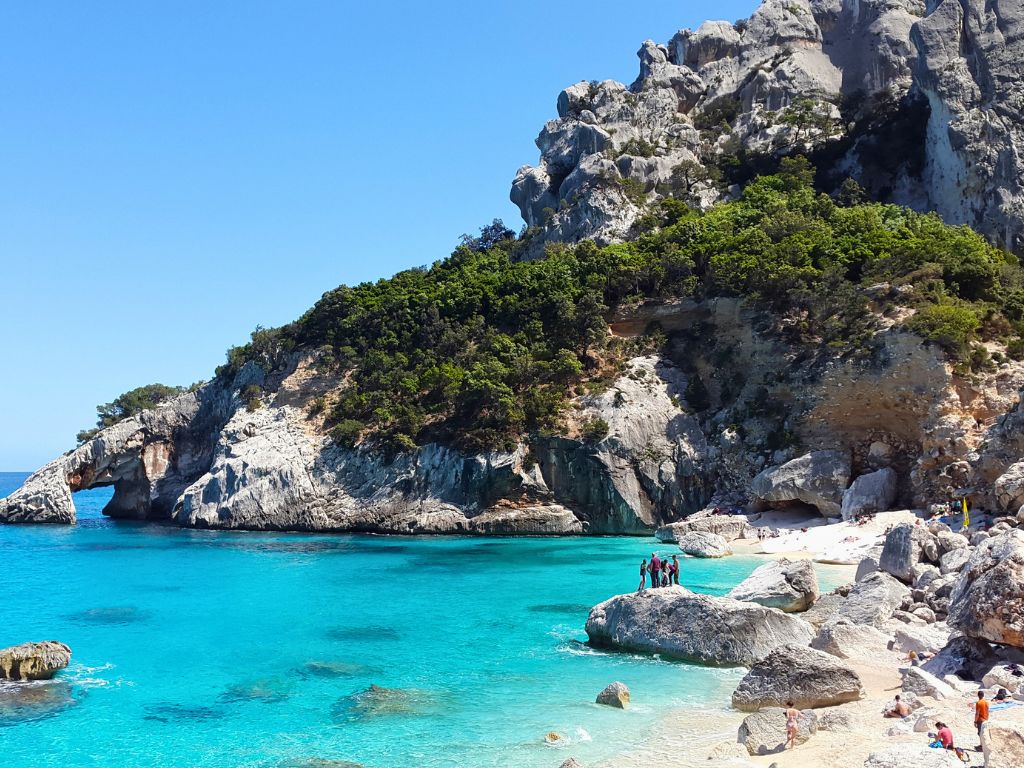
During the peak summer months parts of Sardinia are extremely popular with locals, Italians and other visitors. Arrive early to get your place on the sand or book sunbeds in advance to ensure you don’t miss out.
Italian beaches come with a very specific culture so you cannot just turn up and lay out your towels anywhere. Check with your accommodation or tour leader what the situation is with your local beaches.
Finally, the Costa Smeralda coastline, particularly around Porto Cervo, has become a home for the mega-rich with huge marinas, yachts, exclusive restaurants and high-end beach clubs. You can expect to pay significantly higher prices than anywhere else in Sardinia so while the scenery is stunning, our suggestion is to head south to San Teodoro or west to Baja Sardinia for beaches that are just as good but cost a lot less.
When to Visit Sardinia
The best time to come to Sardinia Italy depends on what you want to do during your visit. If lounging around on sun-drenched beaches and enjoying long, warm evenings drinking and dining is what you’re looking for, June to September will be ideal. Book your accommodation and transport well in advance to get the best prices.
This is peak season, particularly along the coast, so if you prefer fewer tourists and want to do a mix of sightseeing and relaxing, consider visiting in the shoulder seasons of April to May or September to October. The weather in these months is still warm but more comfortable for being out visiting archaeological sites and towns.
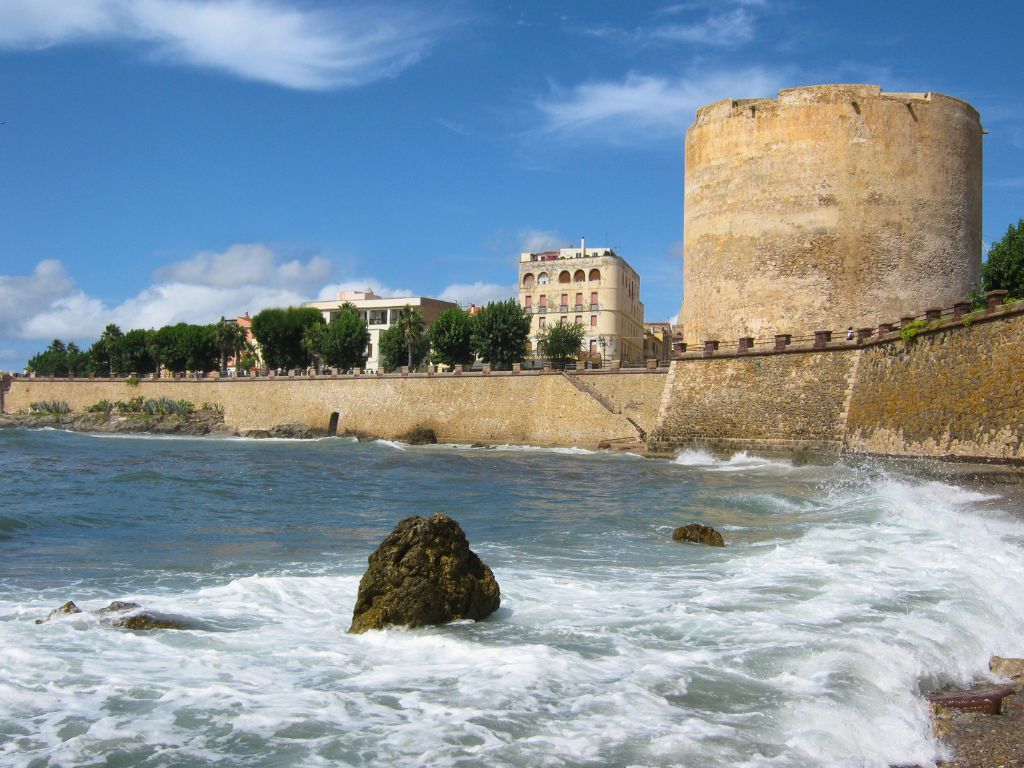
In the winter there is still a lot to do but many of the coastal areas shut down so there will be less accommodation options. Stay in Sardinia’s cities and you’ll find plenty to occupy your time even out of season.
How to Get to Sardinia
If you are planning to fly to Sardinia Italy, you have three options; Cagliari in the south, Olbia in the north and Alghero in the west. Your choice of airport depends on where you want to go in Sardinia, but also where you are coming from.
Direct flights from the USA to Sardinia currently do not exist so you will have to fly somewhere in Europe and then change. The most common options are to fly into London, Paris, Geneva, Amsterdam or Frankfurt, but of course most Italian airports will have connections to Sardinia as well. The airports in Rome, Milan, Pisa, Venice and Turin are the most popular but many other Italian airports have routes for Sardinia as well.
The other option is to arrive in Sardinia by ferry. The two main ports are at Cagliari and Olbia but there are also other options such as Arbatax, Porto Torres and Golfo Aranci. The routes that connect to these ports are sometimes seasonal so you should always check your specific dates before making plans to take the ferry.
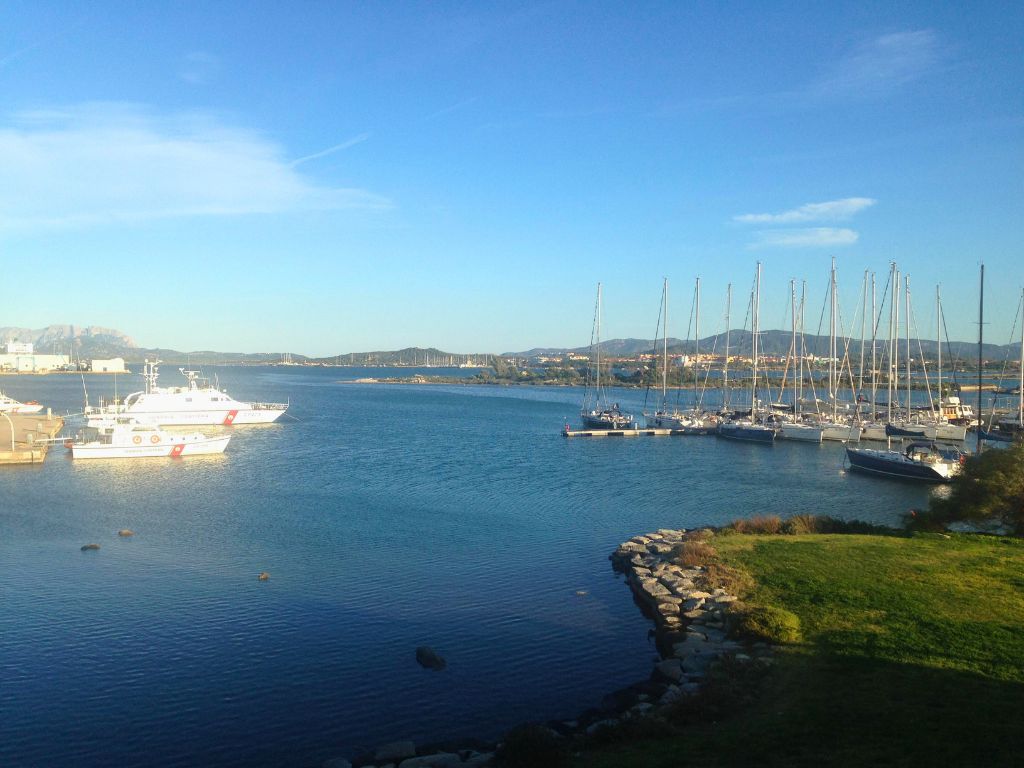
Ferries go from Rome, Genoa, Livorno and Naples on mainland Italy and they take 7-15 hours depending on the route. There are also connections to France, Corsica and Spain. The ferries are great if you have a car or if you want to take a more scenic route but generally are quite expensive and take up a lot more time than flying.
Getting Around Sardinia
Once you are in Sardinia, you will need to decide how you are going to explore. If you want to go up into the high mountains, find remote beaches or quieter sites then you will need a car. In a lot of cases the only access available is with a private car so why not make the most of the island and do some road trips?
Public transportation is limited in Sardinia. Buses do operate but not particularly regularly or often, especially outside of the cities. There are also not many trains, so if you want to travel between different parts of the island, a car really is the best choice.
If you are planning to stay in one place for your whole trip, particularly one of the major cities of Olbia, Cagliari and Alghero, you should not need a car. These cities are very walkable so as long as you book accommodation near the historic center you will be fine.
Food and Wine
Just like the Sardinian language, Sardinian cuisine is deeply tied to the past and the land. You can expect lots of homemade products, exciting flavors and combinations and some fantastic wines, all locally produced.
There are some similarities with classic Italian food but Sardinian food is definitely its own category. You have to try the many types of Pecorino (sheep cheese), fregula pasta, bottarga, lamb dishes and much more – discover more suggestions in our blog all about Sardinian cuisine here.

There is so much to enjoy on a trip to Sardinia Italy, and we hope you will join us in experiencing everything the island has to offer on one of our upcoming adventures here. If you have any questions about visiting Sardinia or are interested in creating your own custom adventure then don’t hesitate to get in touch today.

